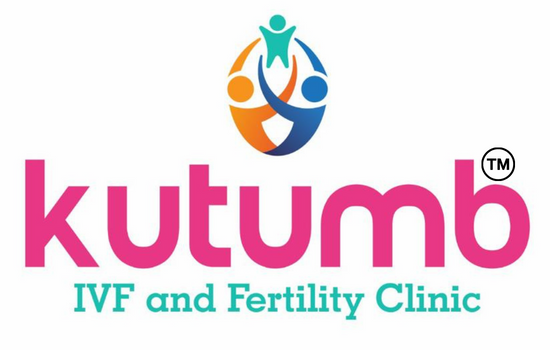 What is Secondary Infertility?
What is Secondary Infertility?
Secondary infertility is a challenging and often unexpected condition where couples struggle to conceive or carry a pregnancy to term after having had one or more children without difficulty in the past. Unlike primary infertility, which refers to the inability to conceive for the first time, secondary infertility can come as a surprise to couples who had assumed they would easily expand their family again. This condition affects about 11% of couples who already have a child.
Consulting an infertility specialist in Vizag is essential for couples facing secondary infertility. These specialists provide tailored treatment plans and advanced reproductive technologies to help overcome fertility challenges and achieve successful pregnancies.
Causes of Secondary Infertility
Understanding the causes of secondary infertility can help couples navigate their options and seek appropriate treatment. Here are some common factors contributing to secondary infertility:
1. Age: One of the primary factors influencing secondary infertility is age. As women age, their fertility declines due to a decrease in the quantity and quality of eggs. Even if they had children in their twenties or thirties, trying to conceive in their late thirties or forties can be more challenging.
2. Changes in Reproductive Health: Conditions such as endometriosis, fibroids, pelvic inflammatory disease (PID), or polycystic ovary syndrome (PCOS) can develop or worsen over time. These conditions can affect the reproductive organs and interfere with conception.
3. Male Factors: Changes in sperm count, motility, or morphology can occur with age or due to lifestyle factors like smoking, excessive alcohol consumption, or certain medications. These changes can reduce the chances of fertilization.
4. Weight Changes: Significant weight gain or loss can disrupt hormonal balance, affect menstrual cycles, and impair fertility in both men and women.
5. Lifestyle Factors: Habits such as smoking, excessive alcohol consumption, and illicit drug use can negatively impact fertility. These factors can also affect overall health and well-being, further complicating conception.
6. Stress: High levels of stress can interfere with hormone production and disrupt ovulation in women, and affect sperm production in men, thereby reducing fertility.
7. Previous Pregnancy Complications: Complications such as pre-eclampsia, miscarriage, or premature birth can increase the risk of secondary infertility. These complications may leave lasting effects on reproductive health.
8. Unexplained Causes: In some cases, despite thorough testing, no specific cause for secondary infertility can be identified. This situation can be particularly frustrating for couples seeking answers and treatment options.
 Age and Fertility Decline
Age and Fertility Decline
Age is a critical factor influencing fertility, affecting both women and men differently as they grow older. For women, fertility peaks in their twenties and begins to decline noticeably around the age of 35. This decline is primarily due to a decrease in the quantity and quality of eggs available for fertilization. As women age, the risk of chromosomal abnormalities in eggs increases, which can lead to difficulties in conceiving and a higher likelihood of miscarriage.
Additionally, advanced maternal age is associated with increased risks of pregnancy complications such as gestational diabetes, hypertension, and pre-eclampsia. These conditions not only affect the health of the mother but can also impact the development and viability of the fetus, potentially contributing to secondary infertility in subsequent attempts to conceive.
For men, while the decline in fertility with age is more gradual compared to women, advancing age can still affect sperm quality. Older men may experience decreased sperm motility (ability to swim) and morphology (shape), as well as increased DNA fragmentation in sperm, which can impair fertilization and embryo development.
Couples experiencing secondary infertility due to age-related factors are encouraged to consult with a fertility specialist. Depending on individual circumstances, options such as assisted reproductive technologies (ART) including in vitro fertilization (IVF), the use of donor eggs or sperm, or fertility preservation (such as egg freezing) may be recommended to optimize chances of conception.
 Uterine or Cervical Factors
Uterine or Cervical Factors
Issues related to the uterus or cervix can significantly impact fertility, contributing to secondary infertility in couples who have previously conceived successfully. These factors may include structural abnormalities, scarring, or conditions affecting the uterine lining or cervical mucus.
Uterine Factors:
• Fibroids: Non-cancerous growths in the uterus that can distort its shape, block fallopian tubes, or interfere with embryo implantation.
• Endometrial Polyps: Overgrowths of cells in the uterine lining that can hinder implantation of a fertilized egg.
• Uterine Adhesions: Scar tissue inside the uterus, often caused by prior surgeries or infections, which can alter the shape of the uterine cavity and impair embryo implantation.
Cervical Factors:
• Cervical Stenosis: Narrowing of the cervical opening, making it difficult for sperm to pass through and enter the uterus.
• Cervical Mucus Issues: Abnormalities in cervical mucus consistency or quality, which can hinder sperm transport and survival.
Diagnosing uterine or cervical factors typically involves imaging studies such as ultrasound, hysterosalpingography (HSG), or hysteroscopy. Treatment options may include surgical procedures to correct structural abnormalities, medications to improve uterine lining health or cervical mucus quality, or assisted reproductive technologies (ART) to bypass cervical issues during conception attempts.
Understanding these potential causes of secondary infertility empowers couples to seek appropriate medical evaluation and treatment, enhancing their chances of achieving a successful pregnancy and expanding their family. Consulting with a fertility specialist can provide personalized guidance and support tailored to individual circumstances and reproductive health needs.
 Male Factor Infertility
Male Factor Infertility
Male factor infertility refers to issues with the male reproductive system that contribute to difficulties in conceiving a child. While infertility is often thought of as a female issue, male factors contribute to approximately 40-50% of all infertility cases. Here are some common causes of male factor infertility:
1. Sperm Production Issues:
• Low Sperm Count (Oligospermia): When the semen contains fewer sperm than normal, reducing the chances of fertilizing an egg.
• Absent Sperm (Azoospermia): Complete absence of sperm in the semen, which can be due to a blockage preventing sperm release or a problem with sperm production in the testes.
• Poor Sperm Motility: Sperm may have difficulty swimming towards the egg, impairing fertilization.
• Abnormal Sperm Morphology: Sperm with abnormal shape or size that may not be able to fertilize an egg.
2. Structural Issues:
• Varicocele: Enlarged veins in the scrotum, which can overheat the testicles and affect sperm production.
• Blockages: Obstructions in the tubes that carry sperm (vas deferens) or issues with ejaculation that prevent sperm from being released.
3. Hormonal Imbalances: Problems with hormone levels that can affect sperm production, such as low testosterone levels or high levels of prolactin.
4. Lifestyle Factors: Certain lifestyle choices can significantly impact male fertility:
• Smoking: Tobacco use can reduce sperm count, motility, and overall sperm quality.
• Alcohol Consumption: Excessive drinking can impair sperm production and quality.
• Drug Use: Recreational drugs like marijuana or steroids can affect sperm production and fertility.
• Stress: High levels of stress can interfere with hormone levels and sperm production.
5. Environmental Factors: Exposure to certain environmental hazards can also affect male fertility:
• Exposure to Chemicals: Prolonged exposure to pesticides, heavy metals (lead, cadmium), or industrial chemicals can impact sperm production.
• Heat: Prolonged exposure to high temperatures, such as in saunas, hot tubs, or occupational settings, can affect sperm production.
 Lifestyle and Environmental Factors
Lifestyle and Environmental Factors
Apart from specific medical conditions, lifestyle and environmental factors play a significant role in both male and female fertility. These factors can influence hormonal balance, egg and sperm quality, and overall reproductive health. Here are some common lifestyle and environmental factors that may contribute to secondary infertility:
1. Diet and Nutrition:
• Poor diet lacking in essential nutrients can affect hormone production and reproductive health. A balanced diet rich in vitamins, minerals, antioxidants, and healthy fats is crucial for fertility.
2. Body Weight:
• Both underweight and overweight conditions can disrupt hormone balance and menstrual cycles in women, and reduce sperm quality and testosterone levels in men.
3. Exercise Habits:
• Extreme exercise routines or excessive physical activity can disrupt menstrual cycles in women and reduce sperm production in men.
4. Substance Use:
• Tobacco, alcohol, and recreational drugs can all negatively impact fertility in both men and women.
5. Environmental Exposures:
• Exposure to environmental pollutants, pesticides, chemicals, and radiation can affect reproductive health and fertility.
6. Occupational Hazards:
• Certain occupations involving exposure to chemicals, heavy metals, heat, or radiation may pose risks to fertility.
7. Stress:
• Chronic stress can affect reproductive hormone levels and disrupt menstrual cycles in women, and reduce sperm quality and libido in men.
Conclusion
In summary, age-related changes in reproductive health significantly contribute to secondary infertility. For women, declining egg quality and quantity after the age of 35, along with increased risks of chromosomal abnormalities, pose challenges to conception and pregnancy. Similarly, men experience diminished sperm quality with advanced age, affecting fertilization success. Recognizing these age-related factors underscores the importance of proactive family planning and seeking timely medical advice for couples facing secondary infertility. With advancements in fertility treatments, many couples can still achieve their dream of expanding their family despite these challenges.
